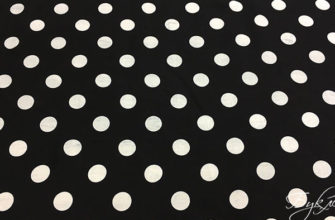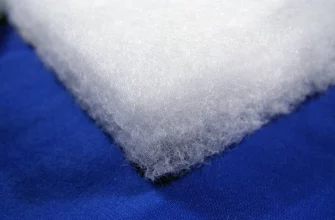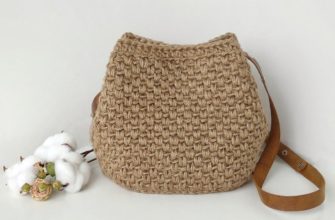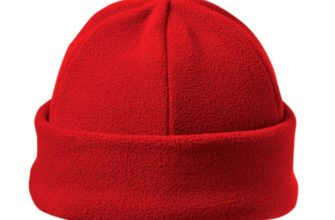Jackets have become a part of our lives and are much more popular than coats, fur coats and other outerwear. They can be light - for spring, and a little thicker - for autumn. No one neglects thick warm down jackets in winter. They have a lot of requirements depending on their purpose and season of wearing, therefore, the materials from which they are made and stuffed are numerous. The material will tell you what material jackets are made of: leather or synthetics and which is better.
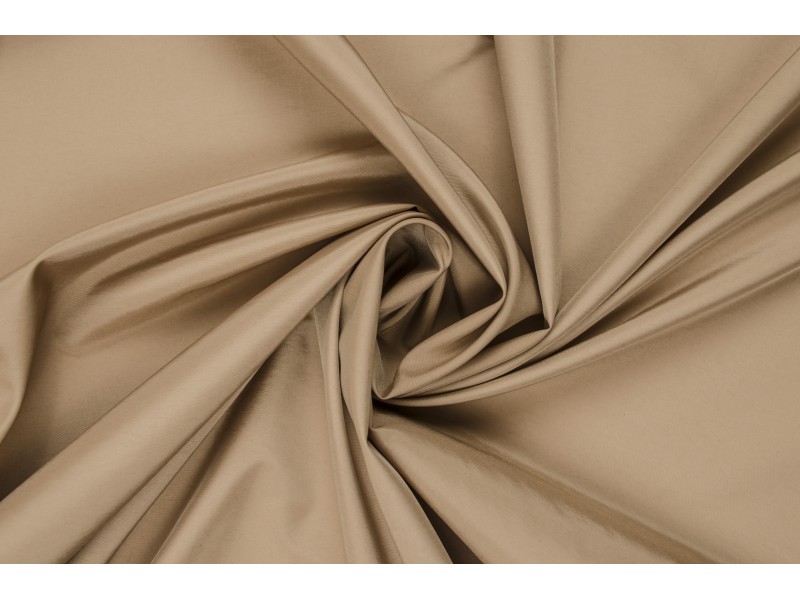
- Features of the composition
- Structure and types of jacket fabric
- Oxford: The burlap originates from Scotland
- Moleskine: "devil's skin"
- Jordan is the perfect fabric for jackets
- Greta: 100% practical
- Duspo: a universal fabric
- Taslan: light and durable
- Taffeta: inexpensive and beautiful
- Diagonal - fabric for breeches
Features of the composition
The main qualities and properties that down jacket fabrics should have are quality, practicality and durability. Accordingly, this can be provided by synthetic fibers, which are represented by most jackets: polyester, nylon, polyamide. More expensive jackets include natural components: cotton, wool. This makes them more pleasant to look at and touch.
Important! To make fabrics water-repellent, they are impregnated with special compounds and dried.
The most commonly used compositions are:
- PVC. The impregnation is very dense and has not only water-repellent but also fire-resistant properties. It retains heat and does not electrify;
- "Silver". A water-repellent coating of silver color;
- "Milk". Milky color and the same moisture protection applied to the inner surface of the fabric;
- "Peach". Can be either peach or other colors. Named for its slightly fluffy coating, which is easy to care for;
- Polyurethane. A colorless impregnation that protects not only from moisture, but also from organic solvents.
Structure and types of jacket fabric
In order for the product to have all the best properties and protect against bad weather conditions, it is necessary to carefully select the material for its manufacture. Modern fabric manufacturers offer a wide range of different types of materials:
- Duspo;
- Oxford;
- Taslan;
- Dianogal;
- Jodan;
- Greta;
- Tafetta.
All these materials are united by wear resistance and strength. This is what justifies their use in sewing outerwear and jackets. However, each of these types has other properties and sensations that are not inherent in other types. It is worth examining the most popular of them in more detail.
Oxford: The burlap originates from Scotland
Oxford is a fabric similar to burlap, but the weave of its fabric is not represented by single fibers, but by whole bundles of them. This adds to it the characteristic of being double-sided, which looks like convex cells. History claims that it was first invented in Scotland, and therefore it began to be called a Scottish basket.
Important! The fabric got its name from the students of the university of the same name. They started wearing shirts and other clothes made of this material and they liked them. This fabric is still considered prestigious in the school and student environment of Europe.
At first, oxford was made exclusively from silk, but then they began to add synthetics - nylon or polyamide. This not only made production cheaper, but also added windproof and water-repellent properties.
Oxford with thicker fibers and a moisture-proof coating is used for jackets. The densest material is used to make tourist backpacks and tents.
Moleskine: "devil's skin"
This fabric got its very original name for its strength properties. It is cotton with a polished outer side. England is also considered to be the birthplace of its creation, where it was obtained at the beginning of the 20th century and was used for sewing clothes for the military and workers.
Time has passed, and moleskin jackets and overalls are worn not only by employees of enterprises and factories, but also by ordinary people. And all because of its properties, which include:
- Moisture absorption;
- Hygiene;
- Eco-friendliness;
- Ventilation;
- Density and strength;
- Wear resistance.
Important! The fabric also has its disadvantages, including coarseness and rigidity. If it touches the bare skin, it will easily rub it. When sewing, the fabric is crumbly.
Moleskin jackets are popular with tourists and athletes involved in skiing and mountain sports, as they allow the body to breathe. It is also used for hunting
Jordan is the perfect fabric for jackets
Jordan was invented relatively recently, but has already become positioned as a fabric that is best suited for making jackets. The fabric is 100% polyester and has a smooth and shiny surface. By itself, it repels moisture well, and when impregnated with compounds, it becomes an ideal option for sewing clothes for the rainy season: jackets, raincoats, raincoats.
Despite its water-repellent properties, Jordan has:
- Good air permeability;
- Durability;
- Wear resistance;
- Ease.
Important! Double stitching allows the jacket to retain body heat, so the jacket does not need additional lining material such as synthetic padding. Moreover, the fabric is easy to care for and can be washed both by hand and in the machine mode, maintaining its appearance for a long time.
Greta: 100% practical
This fabric is unique in its own way. Since both cotton and polyester are used for its production. Greta is woven with a twill weave, which forms two layers. The first of them is represented by a synthetic material, and the second is completely natural.
This is what determined its popularity in sewing outerwear: the comfort of natural material is combined with water-repellent properties and density. It is used for sewing women's and children's coat jackets from dense fabric. It is used to make men's workwear for employees of law enforcement agencies, the Ministry of Emergency Situations and workers.
Its advantages are in its properties:
- Hygroscopicity;
- Eco-friendliness;
- Absence of allergic reactions;
- Density.
If the production is carried out for the military or workers, then in addition to water-repellent impregnation, oil-resistant impregnation is also added.
Important! Fashion has not bypassed Greta. For several seasons in a row, outerwear made of Greta has been present in the collections of some fashion designers who see style in it.
Duspo: a universal fabric
The fabric of Duspo is formed by interweaving thin polyamide fibers. This is a synthetic material from which jacket quilted fabric with membranes is produced, so it has high performance properties. This is the material that can be of almost any color and shade. The impregnation not only adds properties, but also decorates the appearance, making it glossy, shiny or velvety.
The main properties of this double-sided quilted jacket fabric are:
- Wind-protective properties;
- Breathability thanks to membrane construction;
- Wear resistance, despite the fact that the fabric is very thin;
- Moisture repellent.
Jackets and other outerwear are made from it also because it drapes well and leaves no cracks. The fabric does not fade under the influence of the sun and is not afraid of low temperatures. That is why it is often used to sew suits for athletes.
Important! Duspo requires virtually no special care, thanks to its structure, in which it is quilted. Washing can be done both by hand and in a washing machine. However, you should carefully read the label so as not to damage the impregnation.
Taslan: light and durable
Like duspo, it is synthetic. The difference is that the polyamide fibers form a rep weave, not a plain weave. This is what adds to its fine rib texture. To make the fabric even denser, reinforced nylon or capron threads are added to it. In addition, they are treated with a water-repellent composition. All this makes the fabric stronger and protects it from abrasion.
The properties of taslan are practically the same as those of other jacket fabrics:
- Moisture repellent;
- Breathing of the body;
- Oil and sweat are not absorbed into the fabric;
- Ease;
- Wear resistance.
This determined its use in sewing demi-season and winter clothes for adults and children, clothes for athletes and tourists, and tourist accessories. Taslan is also used for furniture upholstery. Taslan is also a smart fabric for ski jackets.
Fabric care is very simple. You can wash it anywhere, keeping the water temperature up to 4000 degrees. Taslan does not need ironing.
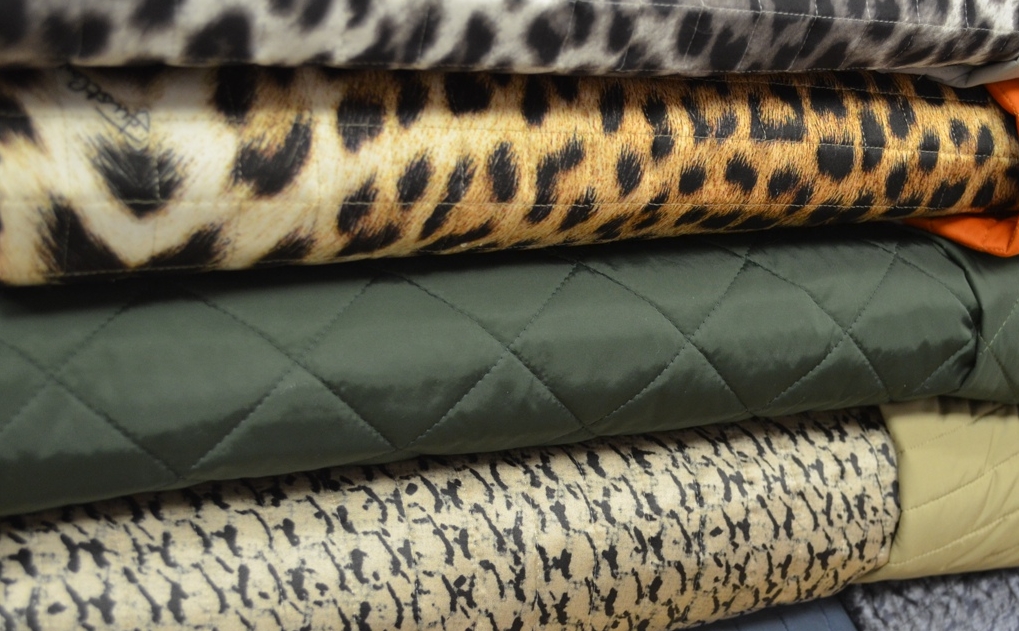
Taffeta: inexpensive and beautiful
The name is very similar to the expensive taffeta fabric, but has nothing to do with it, since taffeta is a synthetic fabric used mainly for sewing outerwear.
The fabric consists of interwoven nylon and polyester fibers. Each of them has its own qualities:
- Nylon fibers are strong and resistant to wear and solvents, but are highly electrified and do not absorb moisture;
- Polyester fibers are less resistant to chemical compounds, but do not fade in the sun.
Taffeta can be thin, medium and thick. For sewing clothes, fabric with medium values of thickness and density, impregnated with special compounds, is used.
Important! The fabric is easy to wash and dries quickly, as it does not absorb moisture well. It is important not to dry the fabric on heating devices and radiators, and not to use chlorine-containing compositions for washing.
Diagonal - fabric for breeches
The 45-degree ribs are a feature of this fabric. This is achieved by twill weaving. The diagonal can be made in natural or mixed manner. The latter is used for sewing jackets and outerwear. The former are used for business suits and dresses.
For sewing jackets, special properties are given to it by added polyester fibers and impregnation. The main properties of diagonal are:
- Elasticity;
- Wear resistance, which is manifested in the possibility of numerous washes;
- Strength;
- Preservation of shape.
- Retaining heat, which is important for outerwear;
- Dry cleaning available.
Important! The first use of the diagonal was to sew riding trousers. It retains its shape well and is ideal for this type of activity. It received the name of breeches from a French general.
Thus, jackets have become a very integral part of our lives and have practically replaced other types of outerwear. There are many requirements for them and the materials they are made of. That is why it is so important to choose the right jacket fabric.

